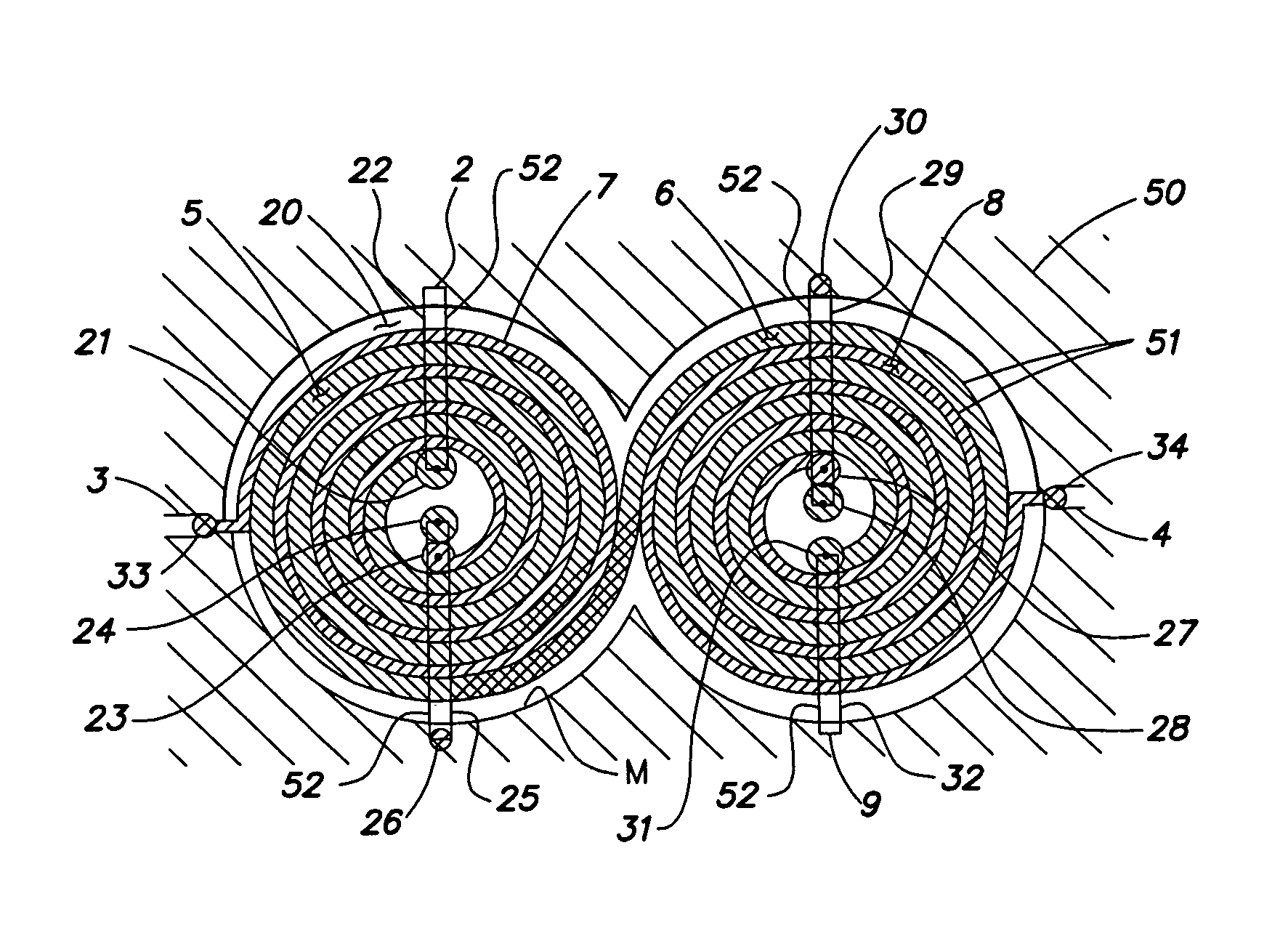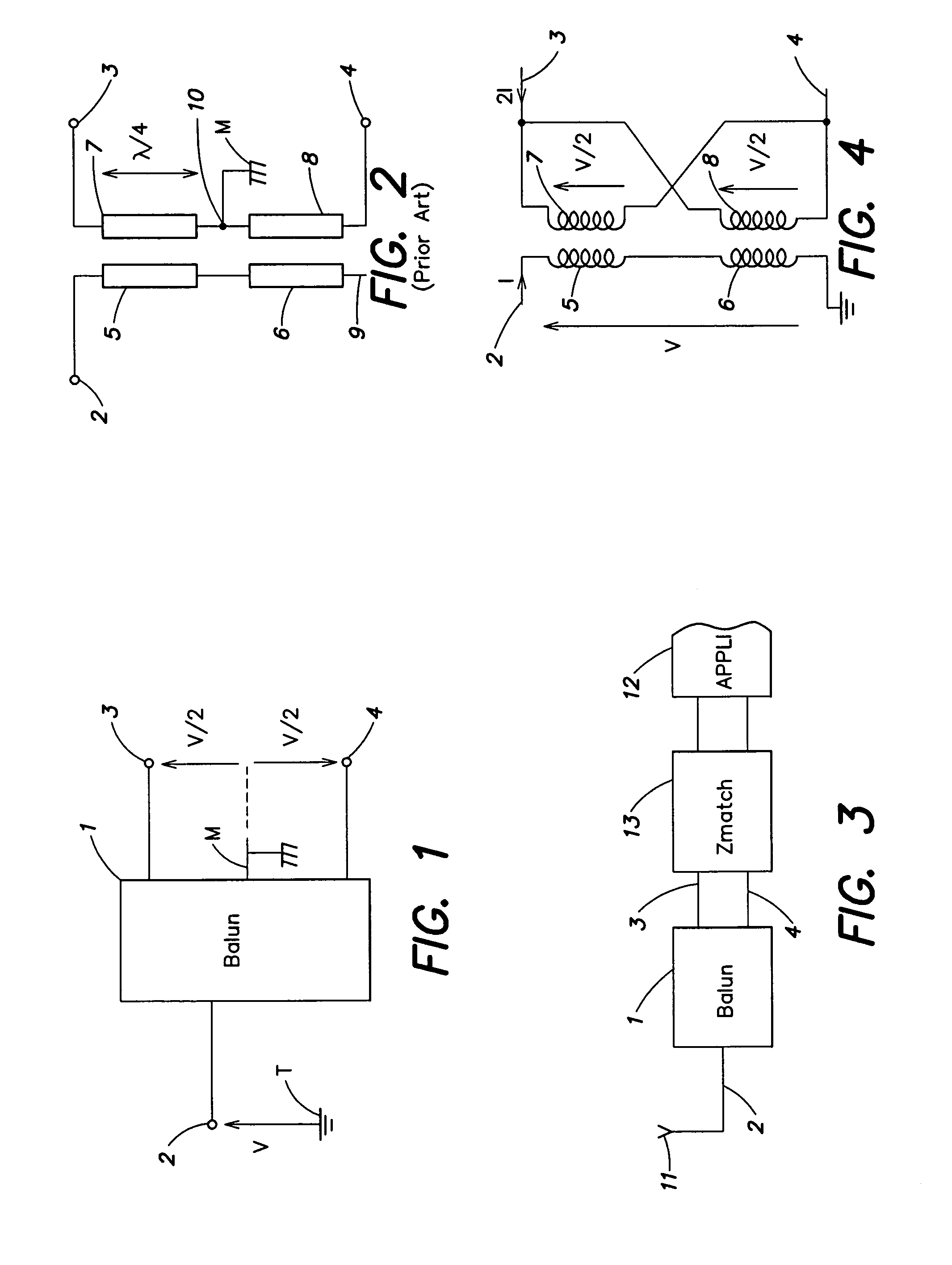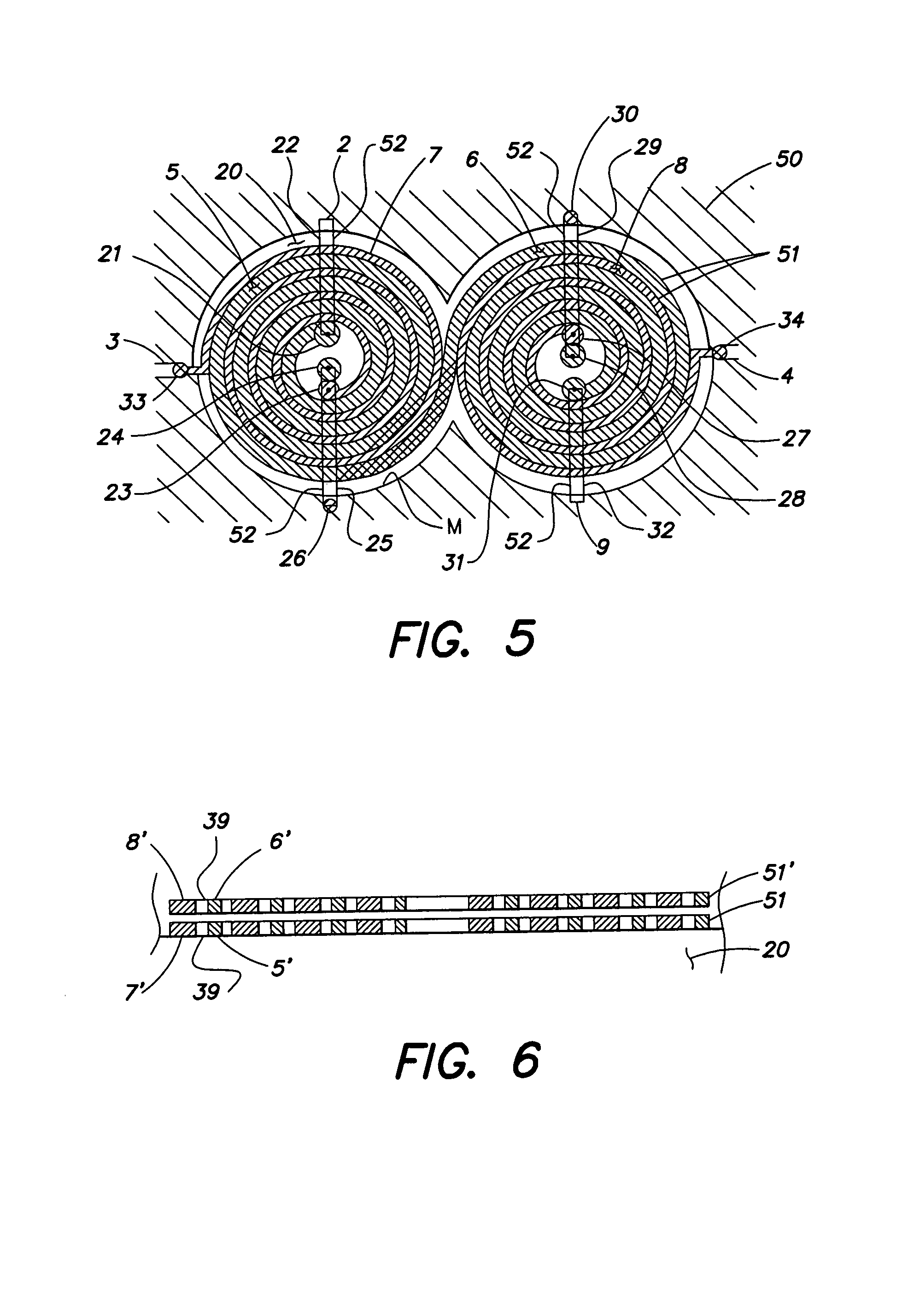Distributed balun with a non-unity impedance ratio
a technology of impedance ratio and distribution balun, which is applied in the direction of broad-band transformers, printed inductances, coils, etc., can solve the problems of complex formation of such baluns, and achieve the effect of simple formation
- Summary
- Abstract
- Description
- Claims
- Application Information
AI Technical Summary
Benefits of technology
Problems solved by technology
Method used
Image
Examples
Embodiment Construction
[0026]The same elements have been referred to with the same reference numerals in the different drawings. For clarity, only those elements which are necessary to the understanding of the present invention have been shown in the drawings and will be described hereafter. In particular, the upstream and downstream circuits of a balun have not been described in detail. The present invention applies whatever the circuits or equipment connected on the differential mode side and on the common mode side. Further, the practical forming of conductive windings on a multiple-level substrate has not been described in detail. The present invention may be implemented using conventional techniques of balun forming by means of conductive tracks.
[0027]A feature of the present invention is to provide conductive tracks having different widths between the primary (common mode) and the secondary (differential mode).
[0028]It could have been thought to modify the impedance ratio by modifying the number of ...
PUM
| Property | Measurement | Unit |
|---|---|---|
| impedance | aaaaa | aaaaa |
| length | aaaaa | aaaaa |
| impedance ratio | aaaaa | aaaaa |
Abstract
Description
Claims
Application Information
 Login to View More
Login to View More - R&D
- Intellectual Property
- Life Sciences
- Materials
- Tech Scout
- Unparalleled Data Quality
- Higher Quality Content
- 60% Fewer Hallucinations
Browse by: Latest US Patents, China's latest patents, Technical Efficacy Thesaurus, Application Domain, Technology Topic, Popular Technical Reports.
© 2025 PatSnap. All rights reserved.Legal|Privacy policy|Modern Slavery Act Transparency Statement|Sitemap|About US| Contact US: help@patsnap.com



